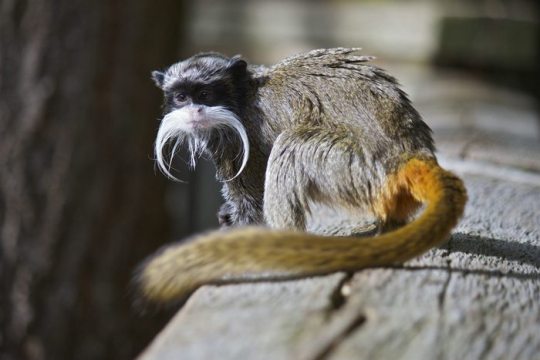#bearded emperor tamarin
Text

Bearded emperor tamarin (Saguinus imperator subgrisescens)
This tiny, tiny tamarin is found in the wet forests where Brazil and Peru border each other. They eat fruit, flowers, fungus, and tree sap- but they’re apparently too lazy to dig their own holes in trees, so they wait for a different species to do it for them!
#markhors-menagerie#primates#new world monkeys#animal facts#fun facts#animals#biology#bearded emperor tamarin#emperor tamarin#tamarin
118 notes
·
View notes
Note
I now headcanon Wukong having whiskers. You're right that is adorable
Fun fact! Every primate barring great apes (+humans) have whiskers! They arent as prominent as in cats, but they're there. Its why most wild monkeys dont really grow pronounced facial hair.
Macaques for example, tend to have faint whiskers on their cheeks - with bonus chin whiskers being common in females.
Emperor Tamarins, in contrast. Have very prominent whiskers in addition to a "moustache";
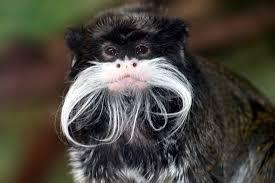
Stone Monkeys sort of resemble Macaque demons, but they have bonus traits that make them look a little "off". Having more prominent whiskers could be one!
Wukong grew his whiskers in when he was young, and boasted forever that he was soon going to have glorious facial hair like some of the older celestials. He got so mad when he learned thst Macaque managed to grow a goatee/beard, even just for a disguise.

Macaque may let his whiskers grow out for once just to annoy Wukong further. >:3
20 notes
·
View notes
Text
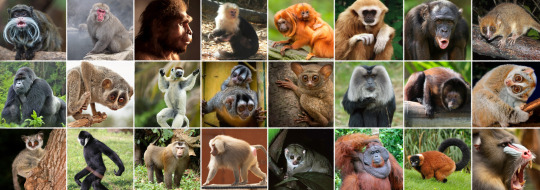
🦍The primate tournament list of candidates has been finalised! Polls will start going up soon!🦧
Thank you to everyone who submitted a species! Here is the full written list:
Basal primates (non-simian primates, including Strepsirrhini and Tarsiiformes)
†Notharctus (Notharctus tenebrosus)
Calabar angwantibo (Arctocebus calabarensis)
West African potto (Perodicticus potto)
Red slender loris (Loris tardigradus)
Bengal slow loris (Nycticebus bengalensis)
Pygmy slow loris (Xanthonycticebus pygmaeus)
Senegal bushbaby (Galago senegalensis)
Brown greater galago (Otolemur crassicaudatus)
Ring-tailed lemur (Lemur catta)
Verreaux’s sifaka (Propithecus verreauxi)
†Archaeoindris (Archaeoindris fontoynontii)
†Megaladapis (Megaladapis madagascariensis)
Madame berthe’s mouse lemur (Microcebus berthae)
Aye-aye (Daubentonia madagascariensis)
Philippine tarsier (Carlito syrichta)
Pygmy tarsier (Tarsius pumilus)
New world monkeys (Platyrrhini)
Wied’s marmoset (Callithrix kuhlii)
Goeldi’s marmoset (Callimico goeldii)
Bearded emperor tamarin (Saguinus imperator subgrisescens)
Golden-headed lion tamarin (Leontopithecus chrysomelas)
Panamanian white-faced capuchin (Cebus imitator)
Central American squirrel monkey (Saimiri oerstedii)
Gray-bellied night monkey (Aotus lemurinus)
Bald uakari (Cacajao calvus)
Madidi titi monkey (Plecturocebus aureipalatii)
Atlantic titi monkey (Callicebus personatus)
Black bearded saki (Chiropotes satanas)
White-faced saki (Pithecia pithecia)
Colombian red howler (Alouatta seniculus)
Brown spider monkey (Ateles hybridus)
Northern muriqui (Brachyteles hypoxanthus)
Yellow-tailed woolly monkey (Lagothrix flavicauda)
Old world monkeys (Cercopithecidae)
Mantled guereza (Colobus guereza)
Zanzibar red colobus (Piliocolobus kirkii)
Nepal gray langur (Semnopithecus schistaceus)
Silvery lutung (Trachypithecus cristatux)
Golden snub-nosed monkey (Rhinopithecus roxellana)
Proboscis monkey (Nasalis larvatus)
Red-shanked douc (Pygathrix nemaeus)
Collared mangabey (Cercocebus torquatus)
Japanese macaque (Macaca fuscata)
Rhesus macaque (Macaca mulatta)
Hamadryas baboon (Papio hamadryas)
Mandrill (Mandrillus sphinx)
Gelada (Theropithecus gelada)
Common patas monkey (Erythrocebus patas)
Bale mountains vervet (Chlorocebus djamdjamensis)
De brazza’s monkey (Cercopithecus neglectus)
Apes (Hominoidea)
Lar gibbon (Hylobates lar)
Pileated gibbon (Hylobates pileatus)
Kloss’s gibbon (Hylobates klossii)
Northern white-cheeked gibbon (Nomascus leucogenys)
Siamang (symphalangus syndactylus)
†Junzi (Junzi imperialis)
Bornean orangutan (Pongo pygmaeus)
†Gigantopithecus (Gigantopithecus blacki)
†Dryopithecus (Dryopithecus fontani)
Western lowland gorilla (Gorilla gorilla gorilla)
Chimpanzee (Pan troglodytes)
Bonobo (Pan paniscus)
†Australopithecus (Australopithecus afarensis)
†Panranthropus (Panranthropus boisei)
†Flores hobbit (Homo floresiensis)
†Neanderthal (Homo neanderthalensis)

The first set of polls will go up as soon as I have finished writing the descriptions! In the meantime, I would appreciate if you could share this tournament around- it won’t be much of a tournament if there aren’t that many people voting! In going down the research rabbit hole I’ve found so many interesting species and stories, and I promise learning about them here will be worth your time!
#primate bracket#tournament#tumblr tournament#poll#polls#primate#primates#extinct primates#biology#animals#zoology#please let me know if I made a mistake anywhere!
98 notes
·
View notes
Photo

Bearded Emperor Tamarin
#wildlife#national zoo#zoo#beared emperor tamarin#tamarin#black and white#dc#washington#september#around dc#my work#photography
26 notes
·
View notes
Text
I wanted to make bearded emperor tamarin oc here's the wip
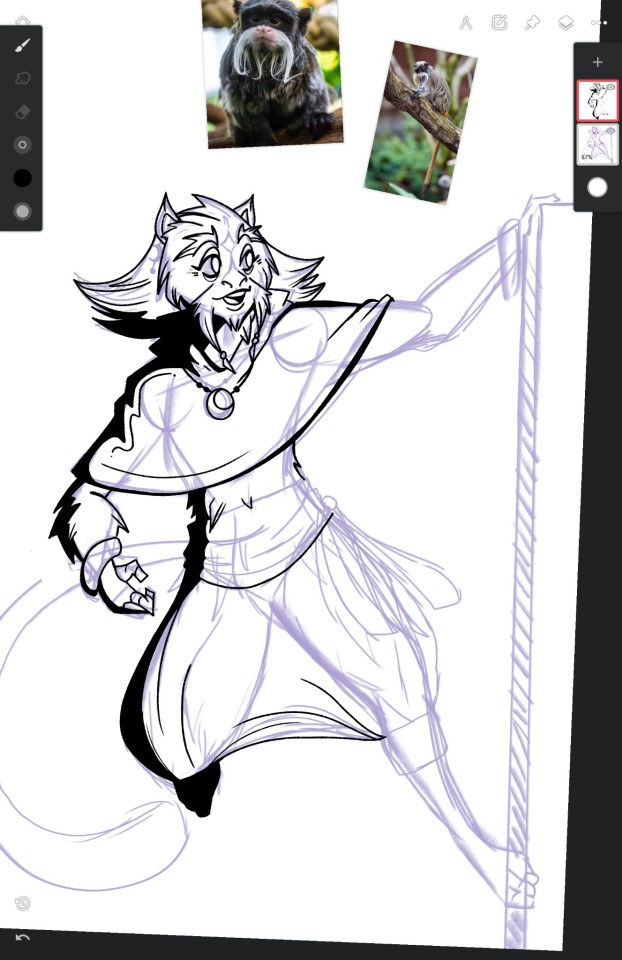
Still figuring out thier color pallet



16 notes
·
View notes
Photo
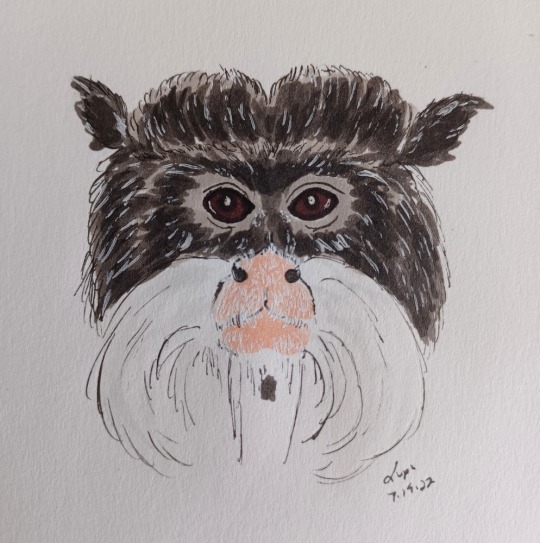
For today's Zooly Art Challenge prompt, I chose the bearded emperor tamarin (Saguinus imperator subgrisecens), named because of its resemblance to Emperor Wilhelm II of Germany, who had rather impressive facial hair. I like to think of them as "little old man monkeys", and I had a lot of fun doing a facial study of this individual.
Ink pen and Copic markers.
#Zooly#Zooly Art Challenge#tamarin#emperor tamarin#monkey#monkeys#primates#simians#wildlife#animals#nature#traditional art#traditional media#illustration
3 notes
·
View notes
Photo

The emperor tamarin ist wearing the (imo) bestlooking Animal Beard. - See more viral images on ViralTiger.org
2 notes
·
View notes
Text
Organism of the Week - Bearded Emperor Tamarin
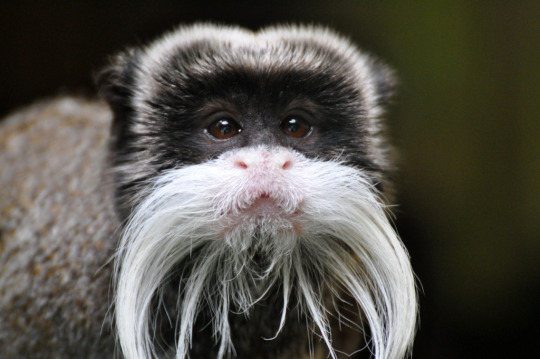
The bearded emperor tamarin or scientifically, the Saguinus imperator subgrisescens, is in the Animalia kingdom, Chordata phylum, Mammalia class, Primates order, Callitrichidae family, and Saguinus genus.
The bearded emperor tamarin is described as a monkey subspecies of the emperor tamarin, distinguished by their drooping white mustache. Their fur is gray and dotted with yellow or brown spots. They have black hands and feet with a long brown tail up to 15 inches (38.1 centimeters) in length. On each limb, they have claws used to climbing trees. They grow up to 10 inches (25.4 centimeters) and weight 1 pound (.45 kilograms). Bearded emperor tamarins are very social and they live in social groups of two to fifteen others, led by the eldest female of the group and followed the other males. When they sense danger, they shriek to warn the others members to defend their territory. Their decline of population is caused by predators such as wild cats, dogs, snakes, and birds and also humans destroying habitats. Bearded emperor tamarins are omnivorous, eating both plants and animals. Their plant diet consists of fruit, nectar, and tree sap. Their animal diet consists of insects, bird eggs, and small reptiles.
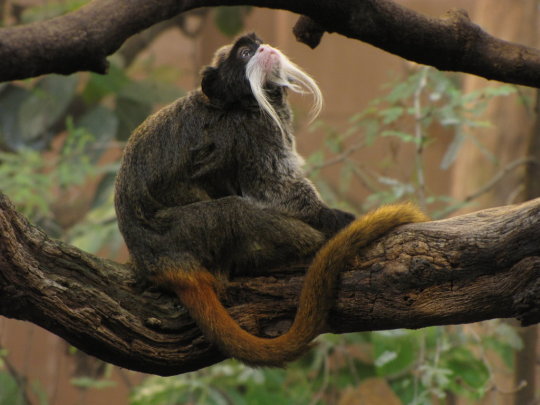
The bearded emperor tamarin is found in tropical rain forests in Central and South American from southwest Amazon Basin in Brazil, eastern Peru. and northern Bolivia. They are most active during the day, leaping on trees with their social groups and they sleep in the trees during the night.

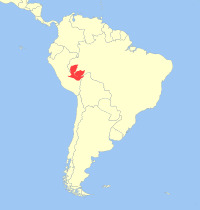
The bearded emperor tamarin breeds April to July in which the female emits pheromone chemicals, alerting the males. In each group, the two oldest males and two oldest females breed and reproduce. The female’s gestation period lasts between 140 to 145 days, giving birth to two or three young. The whole tamarin group takes care of the young and the males usually carry and groom the babies. The baby tamarin walks at 2 to 5 weeks and eats solid food at 4 to 7 weeks. They become independent at 10 to 18 weeks but they still stay within their group. They are weaned at 15 to 25 weeks and reach sexual maturity at 2 years old.
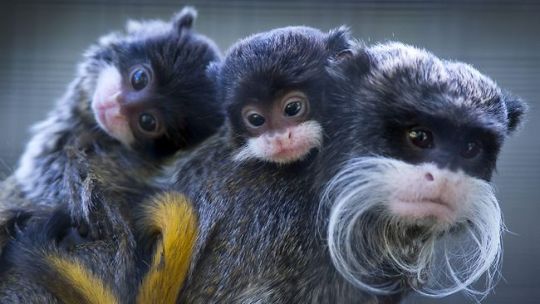
Fun Fact: The emperor tamarin is said to resemble the facial hair of the last emperor of Germany, Wilhelm II.
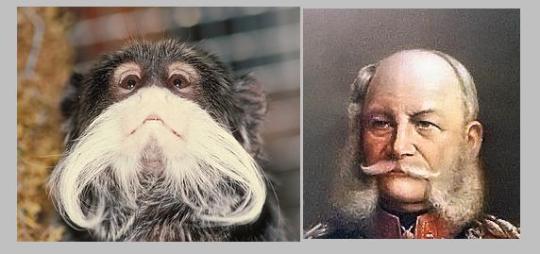
http://www.worldatlas.com/articles/bearded-emperor-tamarin-facts-animals-of-south-america.html
https://a-z-animals.com/animals/emperor-tamarin/
3 notes
·
View notes
Note
Sorry if this is too dumb but is something I always wondered do other primates have mustaches? Or facial hair?
I am so glad you asked.
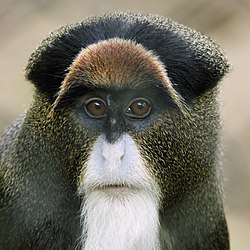
The De Brazza's monkey, with a lovely beard,

The emperor tamarin, with a marvelous mustache,
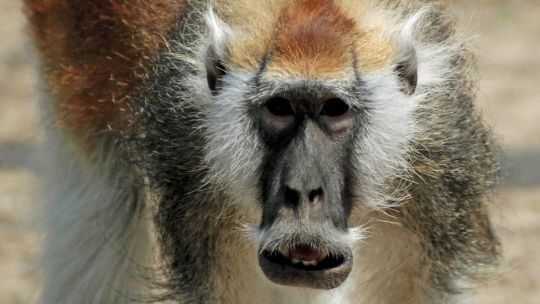
The Blue Nile patas monkey, who has possibly the most obvious facial hair in the patas monkey family (although other types of patas monkeys have mustaches too, they are more subtle.)
146 notes
·
View notes
Photo
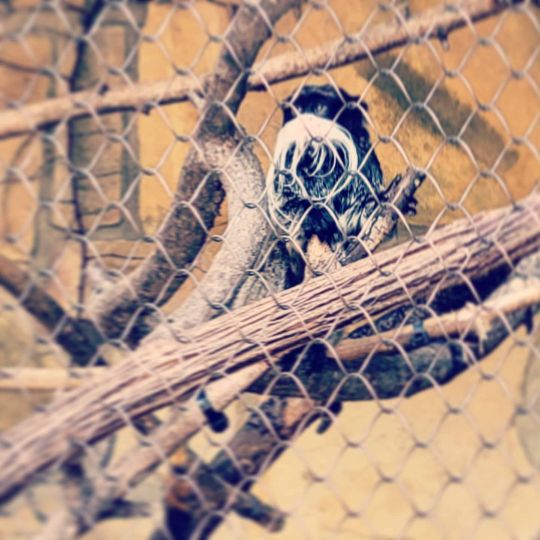
Now THAT is a mustache! Emperor Bearded Tamarin at the #dallaszoo (at Dallas Zoo) https://www.instagram.com/p/CTiZpUhrpAo/?utm_medium=tumblr
5 notes
·
View notes
Photo
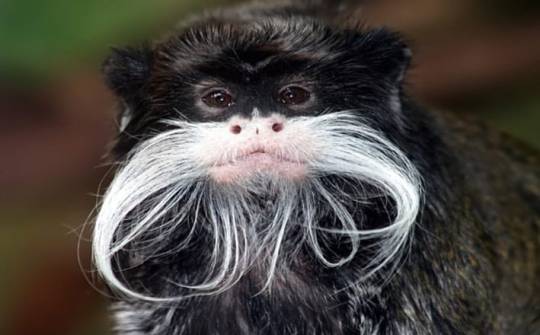
Absolute quality beard here from this Emperor Tamarin. It's great to see theres a world of quality beards out there. World wide shipping available from Chitsman. Give your beard or your loved ones beard a touch of luxury & class. Visit www.chitsman.com #london #london🇬🇧 #newyork #berlin #madrid #moscow #milan #rome #newdelhi #sydney #auckland #Melbourne #losangeles #saupaulo #lisbon #unitedkingdom #unitedstates #europe (at Wellington, New Zealand) https://www.instagram.com/p/CO0vi5WnTr2/?igshid=3d03cu4if2x5
#london#london🇬🇧#newyork#berlin#madrid#moscow#milan#rome#newdelhi#sydney#auckland#melbourne#losangeles#saupaulo#lisbon#unitedkingdom#unitedstates#europe
0 notes
Text
Primate tournament: final round
Bearded emperor tamarin (Saguinus imperator subgrisescens)

This tiny, tiny tamarin is found in the wet forests where Brazil and Peru border each other. They eat fruit, flowers, fungus, and tree sap- but they’re apparently too lazy to dig their own holes in trees, so they wait for a different species to do it for them. And, of course, they have those magnificent moustaches.
Bornean orangutan (Pongo pygmaeus)
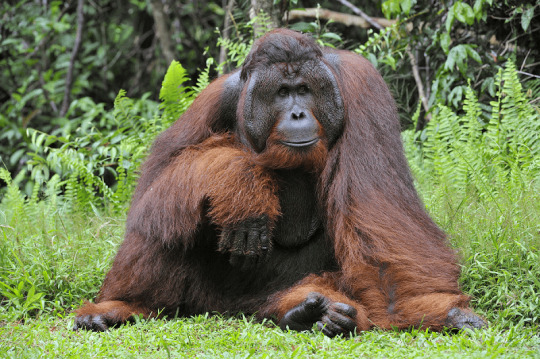
These large tree-dwelling apes are found only on the island of Borneo. They are highly sexually dimorphic, with older males growing large cheek flanges. They eat fruits, leaves, flowers, bark, honey, small animals like insects, spider webs, fungus, and soil. They build complex nests to sleep in, and have been observed using leafy makeshift ‘umbrellas’, sticks to obtain foods like ants, and leaves to hold spiny fruits.
71 notes
·
View notes
Photo
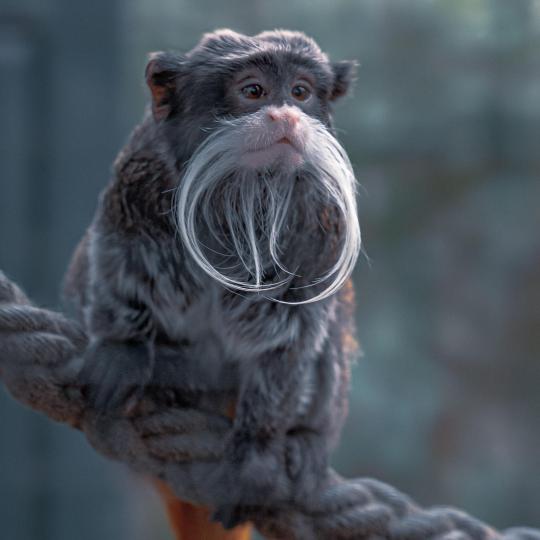
The emperor tamarin ist wearing the (imo) bestlooking Animal Beard.
0 notes
Photo
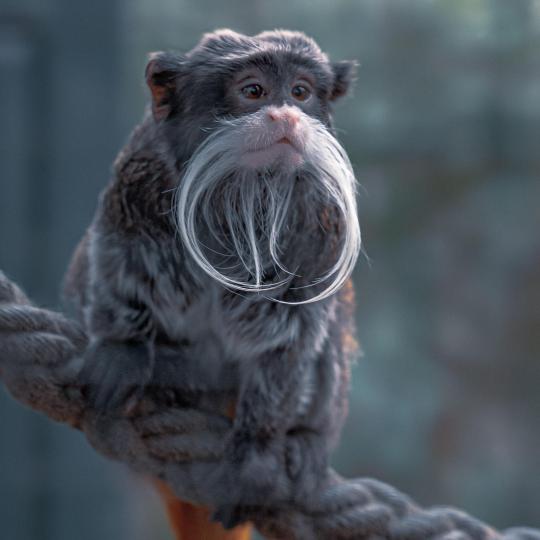
The emperor tamarin ist wearing the (imo) bestlooking Animal Beard.
0 notes
Photo

🐒 Aya, the bearded emperor tamarin trapeze artist! That was a long one, huh? 🐒 Little sketch for @poulasna . #drawing #beardedemperortamarin #monkey #lineart #sketch #trapeze #furry #furryart #furryartwork #anthopomorphic #furryfandom #artist #artistsoninstagram https://www.instagram.com/p/CKT7RsRjKnw/?igshid=qwrfj9n5xemq
#drawing#beardedemperortamarin#monkey#lineart#sketch#trapeze#furry#furryart#furryartwork#anthopomorphic#furryfandom#artist#artistsoninstagram
0 notes
